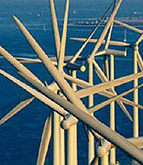No this is not a post about that Daft Punk song, this is about car batteries. Wired is reporting that the next generation of car batteries that are currently in development are going to be better, work harder, allow for faster cars, and hold a stronger cars. Essentially car battery technology is improving thus opening up more possibilities for electric cars.
Firefly has replaced the lead plates found inside conventional batteries with a lead-impregnated foam made from carbon graphite –- one of the few materials that can withstand the highly corrosive sulfuric acid inside batteries. The foam increases the surface area of lead inside the battery, delivering more power and slashing the recharge time, says Firefly CEO Ed Williams.
Equally important, Firefly’s approach eliminates the crystals that can build up inside lead-acid batteries. Over time, those crystals reduce the amount of electricity a battery can hold, one of the major reasons electric and hybrid automakers have favored lithium-ion or nickel batteries, even though lead acid is less expensive.

 The World Wildlife Fund started a great new campaign in 2006 called
The World Wildlife Fund started a great new campaign in 2006 called 